There are various types of crafting and prototyping techniques that can be accomplished with the use of paper.
However, while trying to master the skills that these paper paradigms require, it is also equally important to have the prerequisite knowledge of the same.
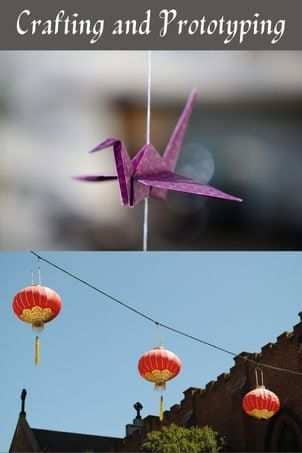
If you are new to this diverse field of crafts and prototyping, and would wish to learn the vivid ways through which they can be manifested in real life scenarios, then you have come to the right place.
We understand that crafting such paper inventions (pun intended) could be a tad bit difficult if you are a beginner, but only with practice comes perfection.
And we are here to help you through the process step-by-step.
We will start with the basics of both crafting and prototyping. This will be followed by a detailed guide on which type of paper is best for crafting and prototyping.
We will also be discussing the differences between the two, and what are the various ways through which we can create aesthetic and artistic objects out of paper using these archaic forms of art.
What you need to know about paper, crafts and papercrafts?
Paper crafts are one of the most popular forms of art in both children and adults. This is because an item as simple as a flower can be manipulated into an innumerable spectrum of designs.
If you are an amateur in the art of paper crafting, then start with a daisy and if you are a professional then use those rolls and folds to make an extraordinary and authentic drone out of it.
But be it a flower or a drone, paper crafting is always an innovative way of channelizing your creativity, especially when it comes to children. So let’s scratch the surface and learn all that we should know about paper, crafts and paper crafts.
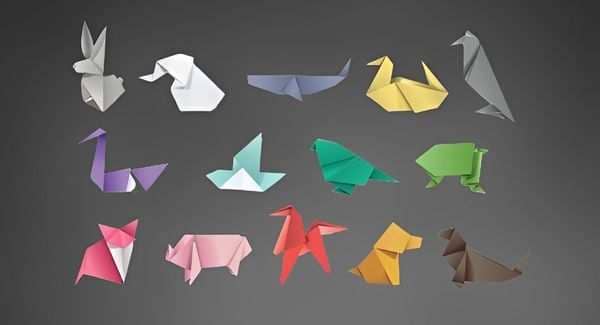
What is paper crafting?
Crafting is either a hobby or an activity of creating decorative objects with the use of hands.
With the help of this, the term paper crafting becomes easily comprehensible.

Yes, you thought correct, paper crafting is an art or a hobby of creating decorative items out of paper.
Now, obviously not just paper. Addition of subsequent items only adds to the shimmering glamour of the art of paper crafting.
What is prototyping?
Prototyping, essentially, is the process of replicating the items created while performing crafts with paper.
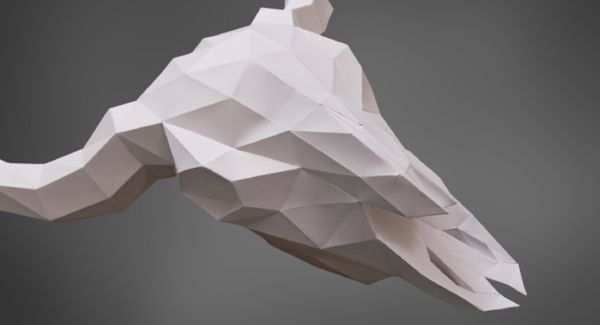
Moreover, it is not necessary to create a prototype of the exact same match as the initial paper craft item. You can manipulate the shape, color or even texture to a certain extent while prototyping a paper craft item.
It is mostly used to create miniature building replicas of a real world project, drones and various other exciting ventures.
Why Paper Crafting and Prototyping?
Why indeed should you care about a good old tradition of paper crafting that has just been modernized but its essence is still ancient?
Well, paper is one of the most abundantly available, inexpensive and familiar items at a global scale. Under the right type of guidance, you can use it for creating almost anything – prototyping miniature models, constructing furniture or even building boats and mon chateaus.
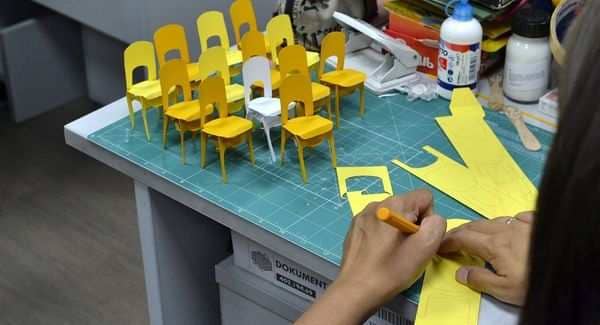
It is also important to keep in mind that the type of paper that you use for both paper crafts and prototyping will have an effect on the product thus created.
And so it is important to know the various types of papers that are used in paper crafting and prototyping, the distinction between them and also which paper would suit the craft or prototype being made at hand.
Let’s get virtual!
Before we delve into the depths of paper crafts and prototyping, we hope you understood what the terms mean. However, if you still find it difficult to relate to the concept of prototypes, then here is a link to a YouTube tutorial that will help you understand it at a much better level.
In this YouTube tutorial, the YouTuber creates a paper prototype of design thinking using materials easily available at home.
These include scissors, tape, glue stick, marker, post-its, paper and cardboard in various colors.
This video will help you visualize how you would want your final product to be. It also takes into consideration the difference between an average prototype and a highly polished prototype. Hope it helps 🙂
Deeper than Paper – Does a ‘type’ of paper impact your crafting and prototyping?
As mentioned earlier, the type of paper you would use while construing craft items would play a substantial role in the quality of the item thus created. Thus, while performing paper crafts the primary factors that have an impact on the crafts are:
As mentioned earlier, the type of paper you would use while construing craft items would play a substantial role in the quality of the item thus created. Thus, while performing paper crafts the primary factors that have an impact on the crafts are:
- Thickness
How thick a sheet of paper should be is defined by the purpose it should be used for while crafting and prototyping with paper.
For example, crafting activities such as origami require thin sheets of paper as compared to other activities; while on the other hand handmade invite cards are made out of cardstock paper or construction paper which is relatively thicker and therefore sturdy.
- “Tooth” or Surface Texture
The paper is available in various surface textures. When it comes to paper crafting, the smoothness of the sheet of paper defines its purpose.
Mostly, sleek and smooth sheets of paper are used for crafting. It is best to use this type of paper when it comes to toddlers making easy origami objects such as dogs and frogs. It can also be used for making miniature building models.
A more robust and rough surface gives the crafting paper an edgy look and is used for creating greeting cards and birthday cards.
- Finish
By ‘finish’ of the crafting paper, we mean whether it has a glossy appeal, matte appeal or none of them. A glossy finish would leave a shimmering and bright impression, while a matte finish would give an edgy and modern appeal. The choice is yours. If you do not want either glossy or matte paper for crafting and prototyping then you can also use plain paper. This has the finish of a regular A4 size sheet of paper.
It is important to keep this subcategorization on crafting paper in mind. This is because these factors can change how a sheet of paper holds its shape, and furthermore whether pencil, glue or ink can be used in the crafting paper or not.
Types of Paper Used in Crafting and Prototyping
Now that you are aware of the preliminary basics of paper crafting and prototyping, let’s discuss the types of paper that you can use to boost your creativity.
In order to make this process simpler for you, we have shortlisted the top 6 types of paper used in crafting and prototyping at a globally significant scale.
Copy paper has a fairly smooth texture and an average or medium weight. Primarily used for handwriting, it is the most common type of crafting paper found all over the world due to its flexibility in use.
For example, copy paper can be used for notetaking and writing due to its smooth yet sturdy surface, and it is also stiff enough to be used in miniature models of buildings and other forms of craft.
- Cardstock Paper
Cardstock paper straddles somewhere in between cardboard and paper. It is the smooth, thin and stiff type paper easily available at any stationery store.
When it comes to paper crafts and prototyping, cardstock paper is used for making greeting cards and paper models. Moreover, it is a common type of crafting paper used in stand-up building projects.
Who hasn’t heard of tissue paper, right? But did you know that it is one of the most commonly used papers in arts & crafts and prototyping to give a dampened effect to watercolors, or create a faux stained glass effect.
- Art Paper
When it comes to various forms of arts and crafts, art paper is also an exciting option. Although it could be a tad bit heavy on your pocket.
Art paper, although more expensive than regular paper, is totally worth the money. Its thick and firm grip coupled with a somewhat rough texture makes it ideal for using ink, paint and pencil on it when it comes to paper crafting and prototyping. If you would like to give a frayed effect to your paper art, then tear this paper against the grain.
- Origami Paper
Origami is an ancient Japanese art of creating objects – animals, plants, flowers – with the use of paper. Since it requires folding and creasing at multiple stages, origami paper is made thin yet sturdy to serve this purpose.
If you would like to test the strength or sturdiness of origami paper while performing paper crafting and prototyping then we recommend you to place a string in between a crease of the paper. Its strength and firmness is known to hold the sting back.
- Construction Paper
Construction paper is comparatively thinner than cardstock paper, but still thicker than regular paper. It is soft to fold, has a rough texture and is available in various vibrant colors.
Due to its soft appeal and easy availability, construction paper is used by kids to create various paper crafting and prototyping objects and other 3D crafts. Moreover, it is the best type of paper for toddlers to practice their scissor skills for various arts and crafts related purposes.
Let’s get virtual!
While browsing through, if you were intrigued by the phenomenon of faux stained glass effect and would like to know more about it, then hakuna matata (no worries). We are here to help you make the most out of paper related crafts and prototyping.
Here is a link to a YouTube video that will help you creatively comprehend the idea behind faux stained glass effect.
In this YouTube tutorial, you will learn how to make stained glass with tissue paper, or in other words, how to create a faux stained glass effect.
This is accomplished using easily available materials, namely – two wax papers of approximately the same size, brown construction papers, scissors, glue stick and colored tissue paper. Through this tutorial, learn how to create a stained glass with tissue paper in less than three minutes!
How to Manipulate Paper for Crafting and Prototyping?
If you are engaging with the inventive field of using paper for crafting and prototyping then one thing is absolutely certain. You need to master the art of manipulating paper!
There are various tricks and techniques to it and mastering them only adds on to the creative spurt of your paper crafts and prototypes. So let’s explore the various mechanisms through which you can deceive the edges of paper:
- Cutting Paper
Let’s start with the easiest at the top. If you are using scissors while cutting paper, then you need to ensure that its blades are sharp, pointy and small.
On the other hand, if you would prefer longer, straighter and stripes-like cuts, then we recommend you to use a paper cutter or a knife.
You can swipe the scissors along the edge of a straight metal. Swipe multiple times if need be.
For the same purpose, a vinyl cutter is much more pocket friendly than a laser cutter. It is also an easy to use tool for delicate projects that require precision.
- Connecting
When it comes to paper related crafting and prototyping, connecting two separate entities such that they do not unravel is important. Ordinary glue serves this purpose the best. Spread a thin layer of the glue using a craft stick, toothpick or an index card. You can also use a roller or a paint brush. Spray adhesives and glue sticks also work, but are much less durable and reliable.
- Folding and Rolling
Be it humpbacked mountain folds or V-shaped valley folds, they need to be sharp, edgy and precise when it comes to the art of paper crafting and prototyping. To begin with, fold your sheet of paper along an already indented dull line. This will allow you to make the perfect fold in one go. You can also roll thin strips of paper around a toothpick or pencil in order to create rounded bends or coils.
- Strengthening
In order to strengthen your paper creation of crafting and prototyping and to make them sturdier, you can glue multiple layers of paper (or any other item) together, if possible then with alternative graining.
In order to make your models last longer, you can reinforce it with a transparent sealant or even clear packing tape. Other strengthening reinforcers include epoxy resin, shellac or thinned glue.
Prototyping: An Alternative
With the advent of technology, most of what was physical is going online, including paper. Especially paper. Thus, nowadays prototyping is becoming an increasingly virtual field.
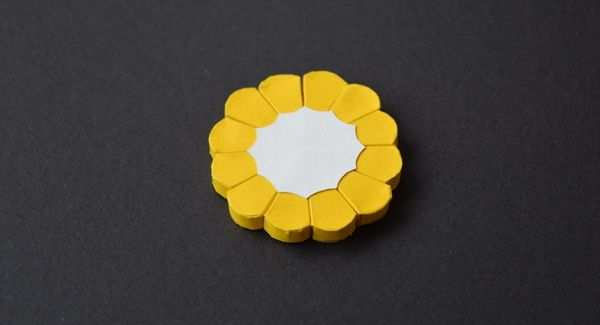
This is because of the expanse of creative fortitude it covers online. Despite this, paper crafting and prototyping continue to create and replenish business models and infrastructures.
Do keep in mind to create long lasting models that are precisely cut, well connected, sturdy and reinforced using a sealant. We hope this helped you understand the concept of paper crafting and prototyping. So go make your own prototype of the real world.
FAQs
Can I use origami paper for prototyping?
Yes, you can use origami paper for prototyping. In fact, this type of paper is thin yet sturdy. This helps in making sharp edges and precise folds that only add on to the overall appeal of the prototype.
What is cardstock paper?
Cardstock paper is a type of crafts paper that is used in making greeting cards, invites and such. This type of paper is thinner than cardboard paper but thicker than regular paper and is quite commonly used in stand-up building projects.
What does it mean by the ‘tooth’ of paper?
The term ‘tooth’ is nothing but a synonym to the surface texture of the paper. Thus, the tooth of paper can vary from being smooth and soft to rough. Crafting and prototyping paper with a smooth surface is used for activities such as crafting. The rough surface texture of a sheet of paper is best used for writing, painting and maintaining the water colors.
What are the various types of paper used in crafting and prototyping?
There are six most commonly used types of paper used in crafting and prototyping – art paper, tissue paper, cardstock paper, construction paper, origami paper and copy paper.
What is an alternative to paper prototyping?
If you do not wish to engage in paper prototypes of your business model, then you can always resort to various other websites online. They will charge you a minimal fee and present to you a virtual prototype of your business model. This is a more eco-friendly way to go about designing prototypes.
Conclusion
Hope you have got a fair understanding of paper craft and prototyping.
What is the recent paper craft and prototyping projects that you have enjoyed working on?
You can share your projects by visiting the Contact Us page.
If you wish to learn more about paper prototyping you can visit the interaction-design.org website.

Leeisha
Creative Artist
Leeisha is a talented artist with a passion for drawing, coloring, painting, and making paper crafts. Known for her charming and talkative personality, She always finds new and exciting ways to bring her imagination to life. Whether through sketching, coloring, or paper crafting, Leeisha has a gift for turning her ideas into beautiful works of art.
End of ― “The Ultimate Guide to Crafting and Prototyping with Paper”





![Best Types of Paper for Sleek ‘n’ Chic Crafting [Updated 2023]](https://mlapnvimd7ak.i.optimole.com/w:auto/h:auto/q:mauto/f:best/https://papercanyon.com/storage/2022/08/Paper-for-Crafting-Easy-Guide-768x512.jpg)
![What is GSM Paper – The Ultimate Guide [Reviewed 2023]](https://mlapnvimd7ak.i.optimole.com/w:auto/h:auto/q:mauto/f:best/https://papercanyon.com/storage/2022/08/GSM-Paper-the-Ultimate-Guide-768x512.jpg)
